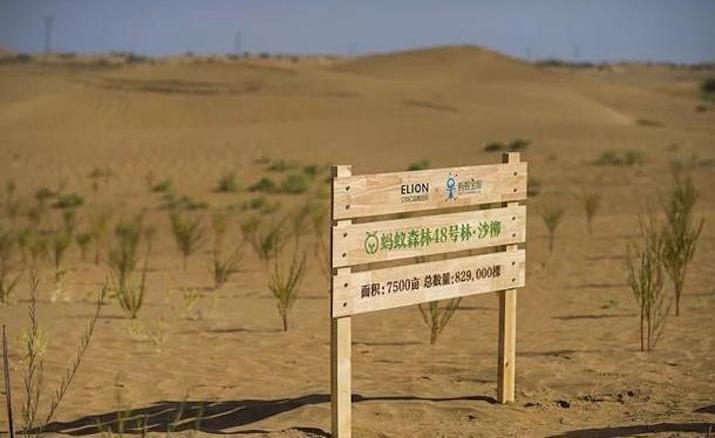
By Phylicia Wu
Financial technology, colloquially known as fintech, is the underlying infrastructure of recent global headlines—bitcoin’s dramatic ebbs and flows, the proliferation of mobile bike-sharing, and the growing issues of micro lending in China. It is ubiquitous in China, and a number of Chinese companies dominate the space including Baidu, Alibaba and Tencent. The fintech boom has certainly re-shaped the way business is done and fashioned societal shifts in China’s consumer market; it is changing behaviors. How then, can the fintech boom create opportunities to help spur sustainable development?
Ant Financial, an affiliate of Alibaba, is one clear example of a company using fintech to encourage a greener world. The company is known for its mobile payment platform, Alipay, and for the world’s largest money-market fund, Yu’e Bao. Under the Ant umbrella, Ant Forest is a lesser-known initiative that is poised to make a big wave.
Ant Forest is the world’s first, largescale, bottom-up pilot in greening citizens’ consumption behavior through the use digital technology and social media. It is an app that Ant users can voluntarily engage with to reduce their carbon footprint and encourage their social networks to do the same. Users that perform carbon-reducing activities, such as paying bills online or walking to work, relative to a pre-determined benchmark, are rewarded ‘green energy’ points. As users accumulate enough points virtually, a real tree is planted. To date, Ant Forest has planted saxauls, willows and Scots pine trees in Inner Mongolia and Gansu.
Users interact with their social networks through the ability to “water,” where green energy points can be transferred to friends up to three times a day to cultivate their virtual tree. During certain periods, users can earn “lucky cards” that can be exchanged for cash rewards. By implementing methods to interact, socialize, and accomplish goals, the app has effectively gamified carbon footprint tracking and “taps into the addictive urge we feel when playing games.” This is the first known attempt to gamify sustainability. Living a low carbon lifestyle is officially fun.
The app was launched in August 2016 and as of April 2017, there were over 220 million users, which is about the population size of Pakistan, the fifth most populous country in the world last year. This has contributed to carbon emission reduction of 5,000 tons per day, or the weight of about 10,000 cars. It is estimated that 65 percent of Ant Forest users are 28 years of age or younger. The initial success of this app has led Ant into internal discussions to launch a version of Ant Forest for small and medium size businesses and inspired a few other tree-growing apps—not entirely copies or competitors of Ant Forest—like “Hu Huan Sen Ling” that encourage environmental awareness by planting a tree for a small fee.
The implications of Ant Forest, beyond the physical trees planted, are certainly powerful. This experiment has successfully gamified philanthropic efforts and initiated a small wave of social change. It shows that digital technology utilized in the form of a game and across Ant’s broad platform can be applied to influence individuals to engage in a more sustainable lifestyle. Future developments, such as gaming companies monetizing philanthropic efforts, could be game-changing—think Electronic Arts monetizing consumerism with The Sims.
It is important to take stock of the many questions that remain unanswered like incentive structure, longevity, and actual environmental impact. Will users continue to be motivated to engage in a low carbon lifestyle? Will users begin to pay less attention to the app and move onto to the next big thing? Can the app be replicated outside of China?
With Ant Forest, Ant Financial has developed a way to make personal environmentally friendly decisions easy and enjoyable. It demonstrates that the power of individuals together to affect sustainable change from the bottom-up is not only exceeding expectations, but also a trend of the future as fintech and other digital technologies will undoubtedly continue to aid China and the world’s green transition.
This post originally appeared on The Diplomat.


